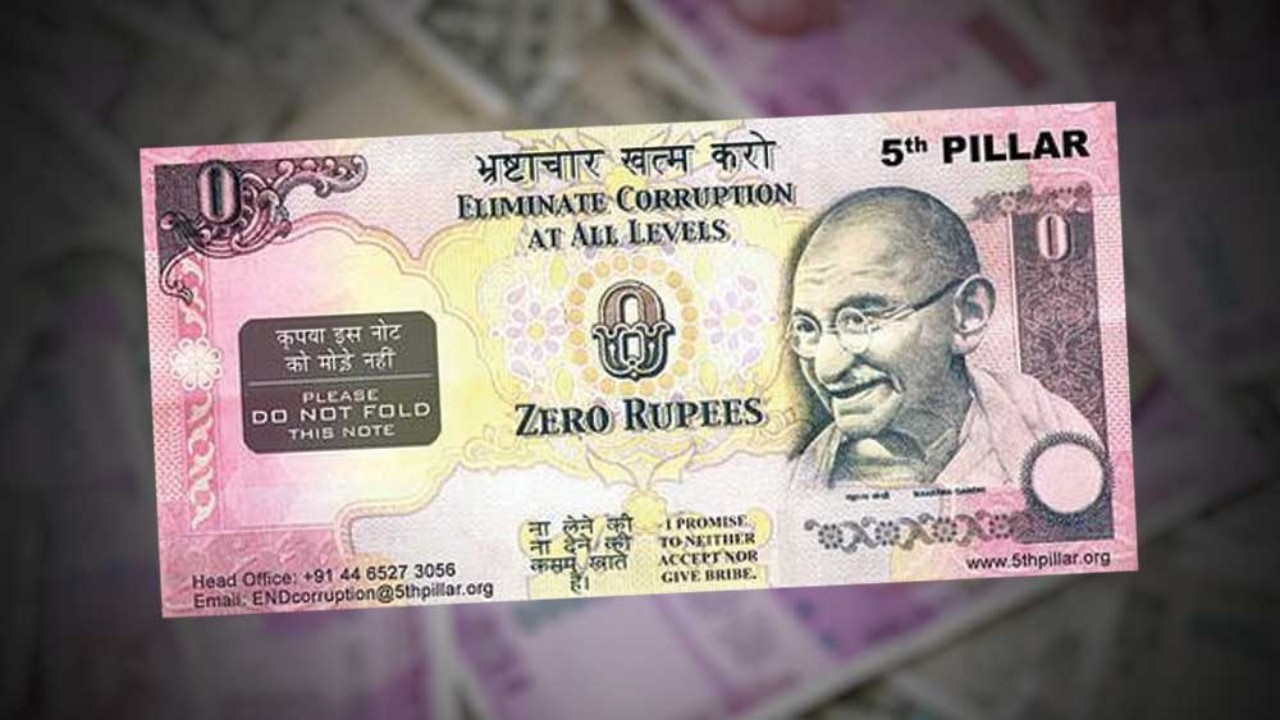Zero Rupee Note in India: The Zero Rupee Note is a symbolic currency note introduced in India as part of an anti-corruption initiative. It was launched by a non-governmental organization called the “5th Pillar” to fight against bribery and promote transparency. The note resembles an actual Indian currency note but has a face value of zero. Its main purpose is to empower citizens to protest against corruption without fear or confrontation.
What is a Zero Rupee Note?
A Zero Rupee Note looks similar to a regular Indian banknote but carries a denomination of zero. It is not legal tender, meaning it cannot be used for any financial transaction. Instead, it serves as a protest tool to say “no” to bribery. People can hand over this note to corrupt officials demanding bribes to express their refusal in a peaceful way.
Who Introduced the Zero Rupee Note?
The Zero Rupee Note was created in 2007 by an NGO named “5th Pillar,” founded by Vijay Anand in Chennai, India. The idea was inspired by the “Zero Euro” souvenir currency used in Europe. The NGO printed and distributed thousands of such notes in five Indian languages — Tamil, Hindi, Kannada, Telugu, and Malayalam — to spread awareness about corruption.
Purpose and Impact
The goal of the Zero Rupee Note is to discourage bribery and corruption by giving citizens a simple way to express dissent. It helps individuals confront corrupt practices without fear or aggression. Over the years, this initiative has received support from both national and international organizations for promoting accountability and ethical behavior in public offices.
Design and Features
The design of the Zero Rupee Note closely resembles the Indian 50 Rupee note. It features Mahatma Gandhi’s image, the “Zero Rupees” denomination, and the message “Eliminate Corruption at All Levels.” The reverse side carries anti-corruption messages and the contact information of the 5th Pillar organization.
| Info In Hindi | View |
Conclusion
The Zero Rupee Note is not real currency but a symbol of protest against corruption. It encourages ordinary citizens to take a stand for honesty and integrity in public life. Although it has no monetary value, its moral message is powerful — that corruption can be fought peacefully and collectively.
